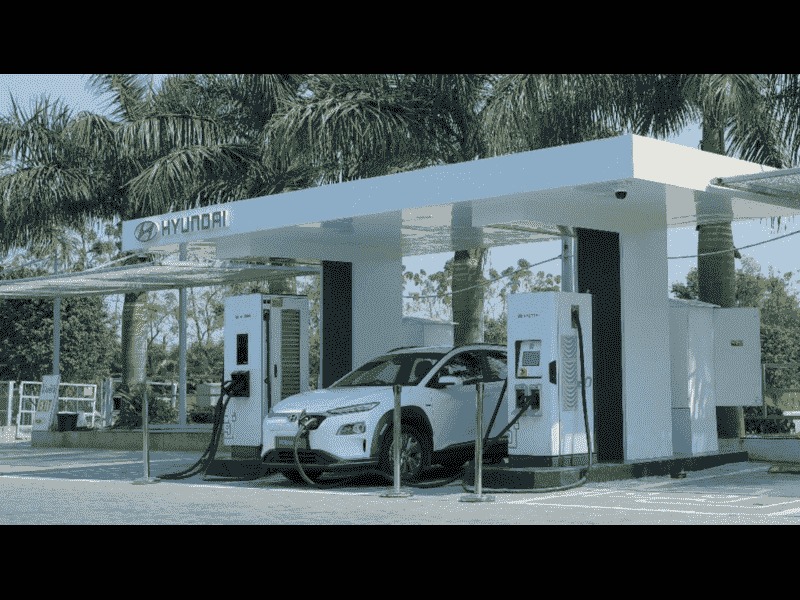Hyundai Motor India Ltd., the country’s second-largest car manufacturer and the largest exporter since inception, has announced the successful expansion of its ultra-fast public EV charging network across key highways and cities in India. The company has installed 11 new DC fast charging stations, each featuring three charging points with different capacities, to cater to the needs of various EV customers. The company also plans to install 100 more charging stations by 2027 as per its agreement with the Government of Tamil Nadu.
Hyundai’s Ultra-Fast Charging Stations Across India
The enhanced public charging network of Ultra-Fast chargers is accessible in six major cities: Mumbai, Pune, Ahmedabad, Hyderabad, Gurugram, and Bangalore, as well as five major highway locations: Delhi-Chandigarh, Delhi-Jaipur, Hyderabad-Vijayawada, Mumbai-Surat, and Mumbai-Nashik. Almost all these chargers are operational 24×7 and are available for all Hyundai and non-Hyundai customers. Moreover, these charging stations also have multiple customer amenities such as coffee shops and restaurants for the customers while their vehicles are being charged.
Each charging station comprises one unit each of DC 150kW, DC 60kW and DC 30kW capacity chargers. The DC 150kW charger can charge a Hyundai Kona Electric from 0 to 80 percent in just 18 minutes, while the DC 60kW charger can do the same in 30 minutes. The DC 30kW charger can charge a Hyundai Ioniq 6 from 0 to 80 percent in about an hour. A charging session can be booked at Rs 18 per unit for the 30kW charger, Rs 21 per unit for the 60kW charger, and Rs 24 per unit for the fast 150kW charger.
Hyundai’s Future Plans for EV Charging Infrastructure in India
Hyundai is not only expanding its EV portfolio in India with models such as the Kona Electric, the Ioniq 6 and the upcoming Creta EV, but also investing in creating a holistic EV ecosystem for its customers. The company has partnered with Shell India to install DC fast chargers at select Shell fuel stations across the country. The company also has more than 2900 AC slow charging points mapped on its myHyundai smartphone app, which are accessible for all Hyundai as well as non-Hyundai EV users.
In addition to these fast chargers, Hyundai is planning to expand these DC charging stations to 10 or more new locations in 2024. In addition, Hyundai is planning to install 100 charging stations by 2027, as per their agreement with the Government of Tamil Nadu in the recently concluded Global Investor Meet held in January 2024. The company aims to support the government’s vision of creating a sustainable and green mobility future for India.
Hyundai Motor India Ltd. is committed to enhance customer’s EV ownership experience by providing them with reliable, convenient and accessible charging solutions. The expansion of its Ultra-Fast charging stations to 11 locations is a step in the same direction.
Recent Blog : Zee Seeks ₹68.54 Cr Refund from Star India over ICC cricket rights
